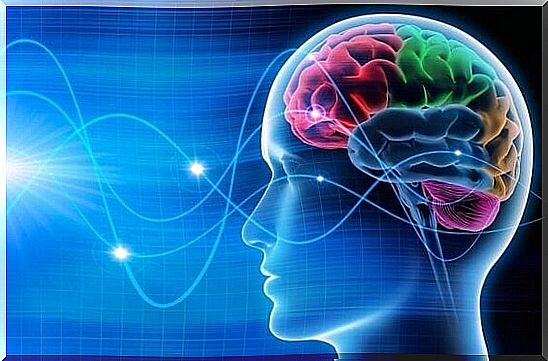Brainwaves: Delta, Theta, Alpha, Beta, And Gamma

There are five types of brain waves. They work almost like musical notes. Some waves are low frequencies and others high. Together they have the power to create harmony. They make sure that your thoughts, emotions and sensations are perfectly balanced, that they are focused and open to everything around you.
Have you ever heard someone say something like ‘ I want to train my alpha brainwaves so that I am more relaxed and have more inner peace’? In fact, people have even talked about bio-feedback machines. These machines can stimulate certain brain waves to bring us into certain states of consciousness. Well, here we have to take cautious steps…
As far as our brainwaves are concerned, the key to authentic health and happiness is to let each wave work in its own way, its frequency, and at its optimum level. We must also remember that they are not static. Rather, they change as we get older. So the point is not that we become obsessed with improving our beta waves to better focus or our gamma waves to get into a spiritual state.
Because the truth is that no one kind of brainwave is better or more ‘special’ than another. They are all important because they are all the result of the electrical activity of our neurons and of our mental state.
The different types of brain waves
We all know that the brain is an electrochemical organ. Neurologists even state that if all our nerve cells activated at the same time, there would be enough energy to light a lamp. That’s amazing!
This electrical activity is responsible for the different types of brain waves. It is a complicated, fascinating, perfect process where any activity, mental state or thought is capable of emitting some kind of brain wave.
During the day, our brains keep all five types of brain waves active. Depending on what we are doing at the time, some brain waves in certain parts of the brain will be more active. Other waves will be less active in other areas. But no brainwave by itself will be ‘off’.
At one point, for example, your alpha waves may be intensely active in your frontal lobe. This will make you feel somewhat apprehensive. But the same alpha waves in the occipital lobe represent an ideal state of relaxation. It is good to take these nuances into account. Now let’s take a look at the different types of brain waves and what they do.
1. Delta Waves (1 to 3 Hertz)
Delta waves have the largest wave width. They are connected with a deep but dreamless sleep. Interestingly, they are very common in babies and children. The older we get, the less we produce these brain waves. Over time, our sleep and ability to relax gradually deteriorate.
In general, the delta brain waves are associated with unconscious physical activities, such as controlling heart rate and digestion.
- What happens when in an electroencephalogram (EEG) the delta brain waves with very high peaks occur? This could be an indication of a brain injury, learning difficulties or even severe ADHD.
- What happens if the waves in the EEG occur in dips? This may indicate poor sleep.
- A healthy level of the delta waves is good for creativity, for emotional connection and intuition.
3. Alpha Waves (8 to 13 Hertz)
Alpha waves arise at those moments between day and night, in the twilight when we are calm but not sleeping. It is when we are relaxed and ready to meditate. Or when we are watching television on the couch or relaxing in bed, but before we fall asleep.
- A high level of alpha waves will prevent us from focusing. It can even make us feel like we have no energy.
- A low level of alpha waves corresponds to anxiety, stress and insomnia.
4. Beta Waves (12 to 33 Hertz)
Now we move from the low and moderate brain waves to a higher level. We are now in that higher spectrum of frequencies that come from intense neuronal activity. They are very interesting but also complicated. They have to do with the moments when we use our full attention, are very alert and looking for stimuli.
Activities such as driving a car, taking an exam and giving a lecture are good examples. But over-activation of our neurons can lead to harmful anxiety and stress.
- On the other hand, a low level of beta waves will lead to an overly relaxed, calm, even depressed state…
- An ideal level helps us to be much more open. Then we are best able to solve problems.
5. Gamma Waves (25 to 100 Hertz)
When you hear the word ‘gamma’, you may immediately think of the famous gamma rays. Their wavelength is long and their electromagnetic radiation is high. Well, gamma waves and gamma rays have only one thing in common: their very high frequency.

Neuroscientists are now beginning to discover more facts about gamma waves. But until recently, very little was known about these waves. In addition, it is very difficult to capture them in an EEG. They originate in the thalamus and then move at incredible speed from the back of the brain to the front.
- Gamma waves are associated with high-level cognitive processing commands.
- They have to do with our learning style, with our ability to absorb new information, and with our senses and perceptions.
- For example, people with mental problems or learning difficulties often have less than half the usual activity of gamma waves.
- We see high peaks in gamma waves during states of happiness.
- The REM sleep phase is also often characterized by high levels of activity in this frequency range.
Finally, learning about the different types of brain waves allows us to understand that our mental processes, our emotions, our activities and our behavior create ‘energy’ in our brain. So the key is to be aware of this process, learn to be relaxed and more receptive and intuitive. We need to work on controlling our emotions so that our fear can work in our favor rather than against us.







